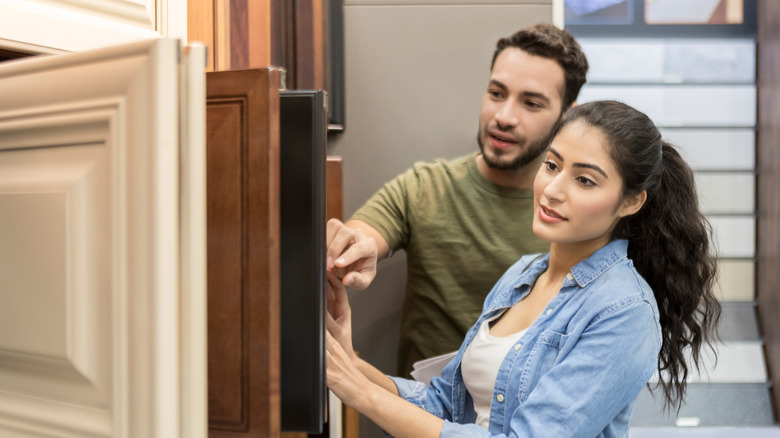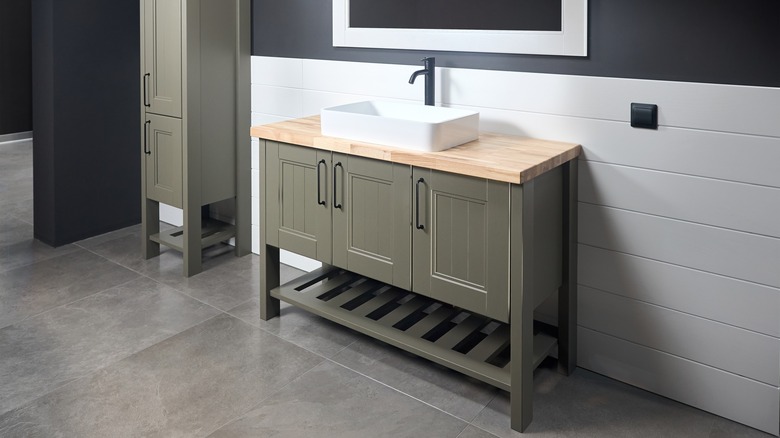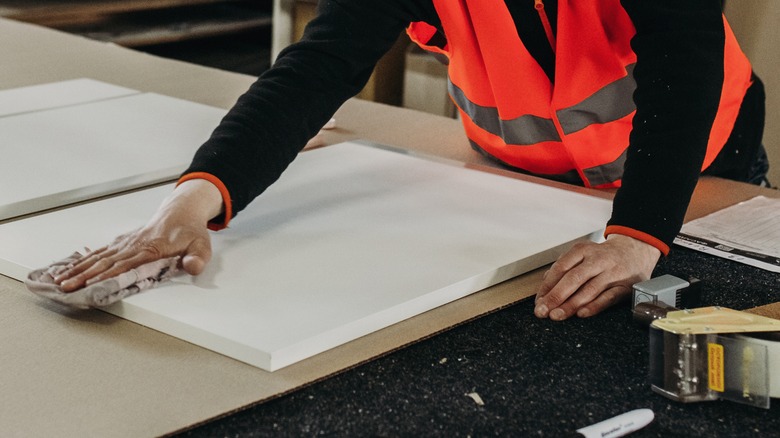The Affordable Moisture-Resistant Cabinets That Are Perfect For Your Kitchen & Bath
When designing a kitchen or bath, cabinetry is one of the biggest decisions of all. It has a major effect on the overall look of the space, not to mention the cost — and aside from later painting your cabinets, you're likely stuck with your choice for a while. One type of cabinet to consider is PVC, which is both affordable and moisture-resistant. Moisture resistance is a major benefit in kitchen cabinets or bathroom vanities as these tend to be the most humid rooms in a home. In the case of bathrooms, waterproofing is also essential. Kitchen and bathroom cabinets also need to be sturdy and durable enough to withstand regular use. Porous materials like granite often need to be sealed to stay protected from moisture.
The most common materials for kitchen and bathroom cabinets largely consist of variations on wood — hardwood, plywood, particleboard, MDF, wood veneer, and so on. But there are also other, less common options worth considering, including PVC. Here's what you should know about PVC cabinets.
What is PVC and why is it a good cabinet material?
PVC, or polyvinyl chloride, is one of the most common types of plastic. It's long been used for pipes, insulation, and medical devices, and now is also used as a building material in place of wood or metal. At an average cost of $100 to $1000 per linear foot (the higher end being for custom cabinets), PVC is much more affordable than wood and has the added perk of being water resistant and termite proof. It's also durable, lightweight, heat resistant, and can be designed to look like wood. For best results, go with PVC foam boards rather than hollow boards; they cost more but are much better suited to kitchen and bathroom cabinetry.
PVC cabinets are also easy to care for and maintain. Unlike some wood alternatives, PVC won't expand or warp over time. While it's best to avoid abrasive materials or harsh chemicals, you can simply wipe them down with a microfiber cloth and an all-purpose cleaner. You can even just use lemon and baking soda to clean your cabinets.
Downsides of PVC cabinets to know
Because PVC is a less common material for kitchen and bathroom cabinets, it may be harder to find what you're looking for — you can't just hop over to your local Home Depot. Your color and design options are also more limited. On the plus side, it is easier to DIY PVC cabinets because of how lightweight they are. You'll need to make sure each piece of hardware and paint that you use is suitable for PVC.
Another consideration is that PVC cabinets are prone to sagging and discoloration. And if you happen to scratch or ding the cabinets, there's no way to spot-fix it like with wood; you'll have to replace the whole piece. So, even though the material itself is durable, the cabinets will likely need to be partially replaced sooner than wood would to preserve their pristine image.
Lastly, if you're looking for environmentally friendly cabinets, PVC isn't the right pick for you. Between pollutants, toxic chemicals, and microplastics, it's considered the most environmentally damaging plastic. It also doesn't biodegrade and is hard to dispose of responsibly once it's past its expiration date.


